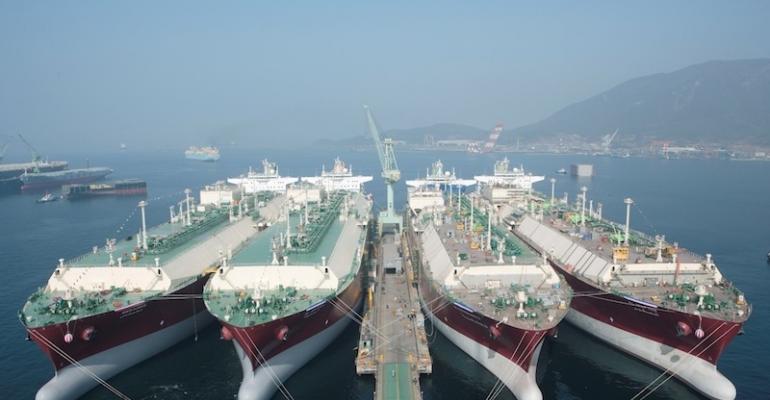The very high rate of slippage of LNG newbuilding deliveries in 2017, “a whopping 50%” as Banchero Costa described it in a report, meant that LNG carrier fleet grew just 5% last year to 490 units. This was good news in the short term, absorbing some of the oversupply in the market and leading to the highest short and long-term rates in three years.
However, the large volume of delayed deliveries casts something of a pall over 2018 – 2020. “The exceptionally high rate of slippage however leaves an excessive orderbook, which stands over 20% of the fleet; this could be a threat to sustained growth in 2018,” a report by Banchero Costa said.
There are 100 units to be delivered in the period 2018 – 2020 and some 97% of these deliveries currently fall in 2018 and 2019.
Banchero Costa is assuming that the newbuild delivery slippage rate will remain high at a rate of around 30%, although notes this is a conservative projection at the actual level could be higher. A slippage rate of 30% would lead to 9% fleet growth in 2018 and 7% in 2019.
With demand continuing to grow this could soften the impact on rates for LNG carriers.
“Demand however is expected to remain strong in the foreseeable future driven by Chinese, Indian and European demand in particular, with new gas fields being drilled and a lot more liquefaction capacity entering into service there will be abundant LNG to be moved around the world,” the report said.
“The driver remains the switch to cleaner source of energy to the detriment of coal and nuclear power generation.”
Copyright © 2024. All rights reserved. Seatrade, a trading name of Informa Markets (UK) Limited. Add Seatrade Maritime News to your Google News feed.


